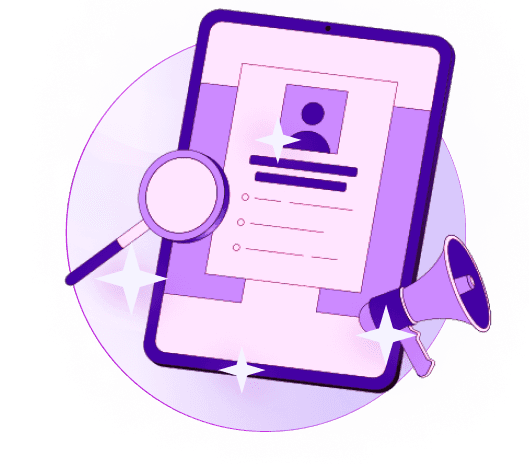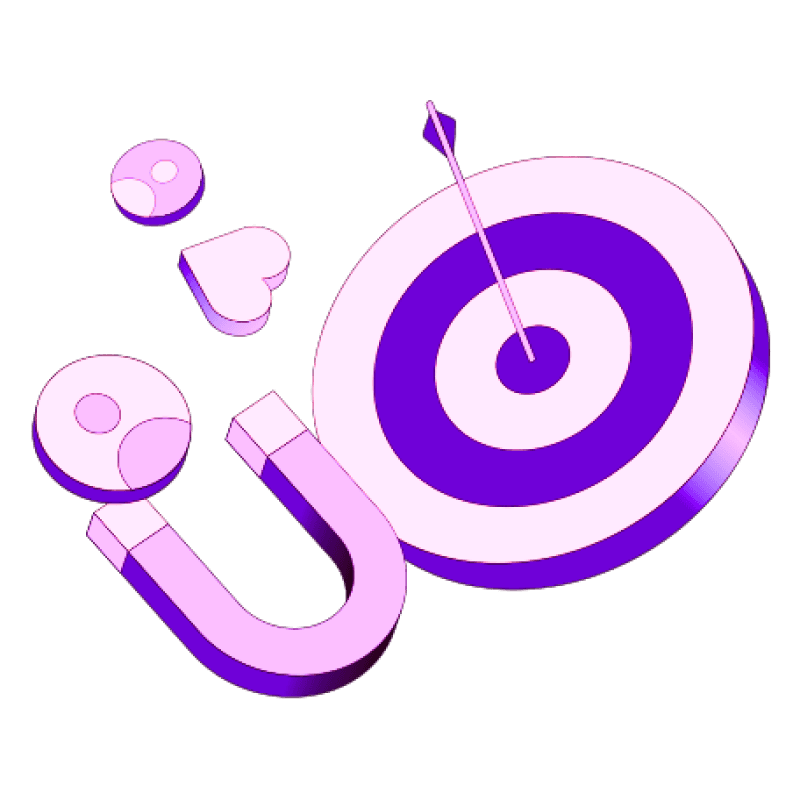Blogs
Articles

How to Build an AI Sales Chatbot That Actually Converts: A Step-by-Step Guide
The AI chatbot for sales market will hit $3.9 billion worldwide by 2030 - a massive opportunity for businesses.
Chatbots have become mainstream, with 67% of consumers using them last year. Business owners report a 67% boost in their sales from these digital assistants. These AI-powered tools will save companies $8 billion and cut down 2.5 billion work hours by 2023.
The trend is clear - all but one of these large companies now put more money into sales chatbots than mobile sales apps. Retail chatbot sales will hit $75 billion by 2028. The real question isn't about whether you need an AI sales bot - it's about building one that converts.
Let's dive into this piece and show you how to create an AI chatbot that brings real sales results. Ready to begin?
What Is an AI Sales Chatbot and Why It Matters?
AI sales chatbots work as smart digital assistants that mimic human conversation to connect with prospects, answer questions, and help potential customers move through the sales funnel. These sophisticated applications use artificial intelligence to understand natural language, learn from interactions, and give personalized responses live.
How AI sales bots differ from traditional chat tools
Traditional chatbots are simple FAQ programs with limited abilities. They depend on pre-programmed rules and responses that make users pick from basic keywords to direct conversations. These simple bots can't handle complex questions or process queries beyond their programmed scope.
AI sales chatbots, however, employ natural language processing (NLP) and machine learning to understand what users want and create human-like responses. They get better as they're exposed to more human language and develop more accurate ways to handle customer questions. While traditional chatbots stick to rigid scripts, AI chatbots adapt smoothly to customer interactions.
Do chatbots increase sales? What the data says
AI chatbots have a powerful effect on sales performance. Websites that use AI chatbots see a 23% higher conversion rate compared to those without. Some industries report success rates that reach 70%.
Companies that use AI sales bots have seen conversion rates jump by 20-30%. This has boosted overall sales revenue by 10-15% while cutting sales and marketing costs by 20-30%. Studies show 75% of companies using AI sales tools report better overall sales performance.
These results come from AI chatbots' ability to qualify leads live, help customers make buying decisions, and address concerns right away—all of which make buying easier. They excel at cart abandonment recovery by reaching out to users with personalized offers that boost recovery rates.
The numbers tell the story: 91% of small and medium businesses say artificial intelligence increases their revenue. This proves AI sales chatbots aren't just fancy tech—they're proven tools that speed up sales.
Benefits of Using AI Chatbots in Sales
AI chatbots in sales bring real value to your bottom line. These digital assistants make operations smoother and buyers happier through 24/7 service and personalized customer interactions.
24/7 customer engagement and support
Today's customers want help right away, whatever the time or day. AI sales bots work non-stop without human limits. They handle customer questions during nights, holidays, and different time zones. Your business can catch every sales opportunity, which matters most when serving customers in markets worldwide. Research shows that prospects are seven times more likely to qualify when they get responses within an hour.
Lead qualification and routing
AI chatbots are great at finding high-intent prospects through targeted questions. They gather essential details like purchase history, priorities, and account information automatically. The qualified leads then move to sales representatives or CRM systems right away. Your team can focus on promising opportunities rather than spend time on unqualified leads.
Personalized product recommendations
AI chatbots connect to your systems and create custom interactions based on customer data. They suggest products that match each customer's purchase history and browsing patterns. This personal touch leads to a 20% increase in median order value. About 60% of customers say chatbots help them decide what to buy. Better personalization makes customers happier and grows your revenue.
Multilingual support for global reach
Your market reach isn't limited by language anymore. AI sales chatbots speak multiple languages to serve customers worldwide. Some platforms support up to 95 languages. You can talk to international prospects without hiring multilingual sales staff. This opens new markets and helps your global sales grow faster.
Reduced response time and higher satisfaction
AI chatbots answer instantly, much faster than human-only support. They handle many conversations at once and give quick, accurate solutions. Companies using AI chatbots see a 70% reduction in response time and their customers are much happier. The chatbots solve common problems immediately, which leads to better customer satisfaction scores.
How to Build an AI Sales Chatbot That Converts?
Building a sales chatbot that works needs good planning, smart design and the right tools. Here are six key steps to create a chatbot that turns visitors into customers.
Step 1: Define your sales goals and use cases
Your original goals shape your chatbot's design. You might want lead generation, appointment booking, order tracking, or HR support. Clear goals will guide how your chatbot behaves. Take a look at sales targets like better conversion rates, fewer drop-offs, or bigger cart sizes.
Step 2: Choose the right chatbot platform
The platform you pick is vital to your chatbot's success. You can choose from ready-made tools like HubSpot Breeze or build custom solutions with OpenAI API. Look at what you can customize, how well it connects with other tools, how easy it is to use, and what it costs. Sales chatbots need features like lead scoring and ways to work with your CRM.
Step 3: Design conversation flows and scripts
Good conversations are your chatbot's foundation. Start with a warm hello, then ask questions that help you gather lead info and qualify prospects. Add clear next steps for users to take. A smooth flow helps users navigate their chat easily. Your brand's personality should shine through your chatbot's messages.
Step 4: Train your chatbot with real data
Your chatbot needs real-life data to get smart. This data includes:
User intents (e.g., "track my order")
Entities (e.g., product names, locations)
Utterances (different ways users ask for things)
Past sales data helps your chatbot spot promising leads and ask the right questions.
Step 5: Integrate with CRM and sales tools
Link your chatbot to your CRM system to see each customer's full experience. This setup lets your chatbot:
Send customer data straight to your CRM
Update records on its own
Get data from the CRM to give tailored responses
Adding calendars and payment systems makes your chatbot even more useful.
Step 6: Test and launch your chatbot
Test your chatbot well before it goes live. Check if it does tasks right, handles busy times, and feels easy to use. Tools like Botium can help, or you can ask real users to try it out and give feedback. Keep an eye on your chatbot's performance after launch to make it better over time.
Optimizing and Scaling Your Sales Chatbot
Your work with sales chatbots doesn't end at launch - it's just the beginning. The best chatbots need continuous monitoring and optimization to maximize their value. Studies show that businesses analyzing their chatbot performance see up to 25% higher conversion rates.
We focused on three vital performance indicators: interaction volumes, containment rate (conversations without human help), and sentiment analysis. These metrics show your chatbot's strengths and areas that need improvement.
Quick action on negative feedback makes a difference. When customers show frustration, you should revise conversation flows and response text. You also need to fix "no solution" conversations by adding content that fills these gaps.
Your chatbot should handle more traffic without slowing down as you grow. Cloud solutions can adapt to increased demand and manage thousands of conversations at once.
Persana and similar advanced AI platforms provide immediate analytics and scaling features that help your sales chatbot perform better.
Note that 99% of companies say chatbots boost their lead conversion rates, and 56% report improvements of at least 10%. Your sales chatbot becomes a stronger conversion tool as you refine it based on real-life interactions, growing with your business.
Conclusion
AI sales chatbots have become powerful tools for businesses that want to boost conversions and streamline their sales processes. This piece shows how these intelligent assistants can transform customer interactions and deliver real results for your bottom line.
The numbers tell a compelling story. Websites using AI chatbots see 23% higher conversion rates. Businesses report sales increases of up to 67%. Adding an AI chatbot isn't just a tech upgrade - it's a smart investment that brings substantial returns.
The advantages go way beyond simple automation. Your business can engage with customers around the clock. You'll qualify leads faster and offer customized recommendations. The bot provides support in multiple languages and cuts response times dramatically. These features match what today's consumers want - quick, personal service.
Your chatbot's success story doesn't end at launch. Keep watching, improving, and growing it as your business and customer needs change. Looking at performance metrics helps you spot ways to improve and boost conversions.
AI-powered conversations will shape the future of sales. Companies that accept new ideas now will lead the pack while others stick to old-school sales methods. We hope you'll use the steps we've shared to build your AI sales chatbot. Your customers and sales numbers will show you made the right choice.
Key Takeaways
Building an AI sales chatbot that converts requires strategic planning, proper implementation, and continuous optimization to achieve measurable business results.
• Define clear sales goals first - Identify specific objectives like lead generation, appointment booking, or conversion rate improvement before building your chatbot to ensure focused functionality.
• Follow the 6-step implementation process - Define goals, choose the right platform, design conversation flows, train with real data, integrate with CRM systems, and thoroughly test before launch.
• AI chatbots deliver proven ROI - Websites using AI chatbots see 23% higher conversion rates and businesses report 67% sales increases with reduced response times.
• Continuous optimization is essential - Monitor key metrics like interaction volume, containment rates, and sentiment analysis to improve performance and scale effectively over time.
• Integration amplifies results - Connect your chatbot with CRM systems and sales tools to create personalized experiences and seamless lead qualification that converts prospects into customers.

Create Your Free Persana Account Today
Join 5000+ GTM leaders who are using Persana for their outbound needs.
How Persana increases your sales results
One of the most effective ways to ensure sales cycle consistency is by using AI-driven automation. A solution like Persana, and its AI SDR - Nia, helps you streamline significant parts of your sales process, including prospecting, outreach personalization, and follow-up.



